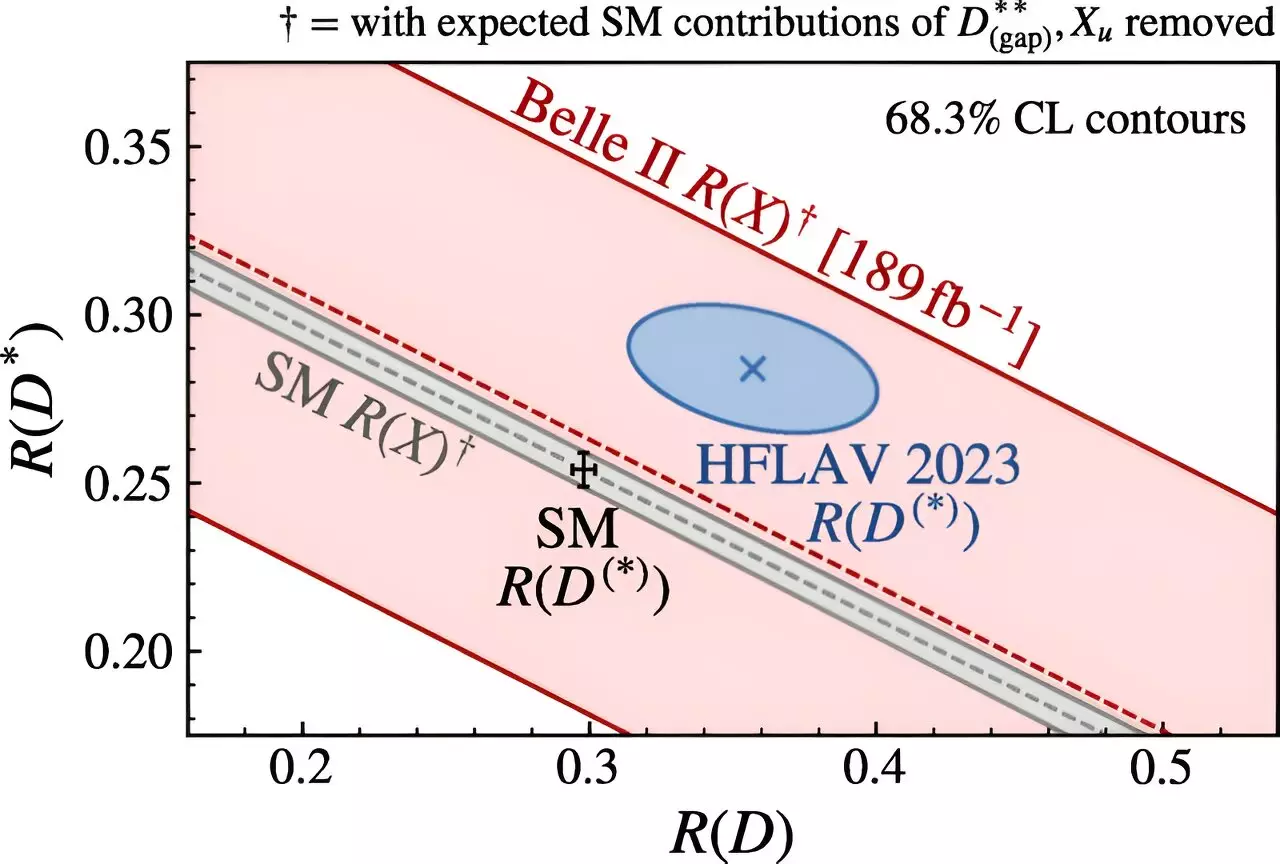In the realm of particle physics, the quest to understand the fundamental building blocks of the universe is both an exciting and complex endeavor. At the forefront of this effort is the Belle II experiment, designed to delve into the intricacies of weak interactions, exotic hadrons, and the potential for new physics beyond the established standard model. Located at the esteemed High Energy Accelerator Research Organization (KEK) in Tsukuba, Japan, this mammoth collaboration relies on the state-of-the-art Belle II detector, which receives data from the SuperKEKB particle collider. Recent findings published in Physical Review Letters underscore the importance of Belle II’s research initiatives, showcasing a significant achievement in the field of particle physics.
Breaking New Ground: The Tau-to-Light-Lepton Ratio
One of the most striking accomplishments of the Belle II experiment has been the first direct measurement of the tau-to-light-lepton ratio, ¥(B(tau)/ℓ)¥, specifically concerning inclusive B-meson branching fractions. This measurement marks a pivotal advance in testing the concept of lepton universality, a principle stating that all charged leptons—electron, muon, and tau—should interact with both weak and electromagnetic forces in an identical manner. Karim Trabelsi, a spokesperson for the Belle II Collaboration, highlights the potential implications of their findings. Any deviation from lepton universality could signal the existence of phenomena that the standard model simply cannot account for, thereby propelling the scientific community towards uncharted territory.
The Case for Lepton Universality
The significance of probing lepton universality cannot be overstated. This principle has been a cornerstone of particle interactions for decades, yet ongoing measurements have suggested inconsistencies between expected outcomes and observed data. Trabelsi emphasizes the rationale behind investigating the tau’s relationship with its lighter counterparts, as discrepancies in previous measurements have surfaced. Importantly, while earlier studies typically centered on exclusive decays involving a single charmed meson, Belle II’s approach encompasses all interactions without distinguishing among hadrons. This inclusive perspective could unravel deeper insights into lepton behavior and aggregate evidence of universality.
A Complementary Analysis: Exclusive vs. Inclusive Decay
The distinction between exclusive and inclusive decay processes becomes critical in this analysis. Theoretical predictions diverge notably in these two scenarios, yet they provide complementary insight into the investigation of lepton universality. Historically, comprehensive measurements capturing both decay types had been limited to a few prior studies, among which data from the Large Electron-Positron Collider (LEP) stands out. In a dramatic shift, Belle II’s fresh measurements promise to bridge a two-decade void, signaling a revitalized approach to understanding the dynamics at play in particle interactions.
Challenges and Opportunities in Measurement
The heart of Belle II’s recent success rests in the meticulous analysis of data pertaining to B mesons, especially focusing on events where accompanying particles are absent. Trabelsi explains the methodology: researchers fully reconstruct one B meson and search for a light lepton generated from the decay of another meson in the process. Notably, the momentum characteristics of leptons from tau decays differ from those produced by B mesons, allowing for an analytical separation essential for gauging the tau-to-light-lepton ratio. While the metrics gathered introduce a certain level of systematic uncertainty, Belle II’s researchers are primed to refine their findings as additional data becomes available.
Looking Ahead: The Future of Particle Physics
The implications of Belle II’s findings extend far beyond mere academic curiosity; they lay the groundwork for future explorations into non-standard model physics. With a growing body of data expected from ongoing experiments, the Belle II team anticipates further updates to their measurements, continuing the search for any violations of lepton-flavor universality. Trabelsi conveys optimism about their prospects: “We are currently collecting more data and will soon update this inclusive measurement, along with exclusive results.”
The excitement surrounding the Belle II experiment encapsulates the essence of scientific inquiry—the desire to challenge established norms and unlock the mysteries of nature. This pioneering research adventure seeks to broaden our understanding of the universe and could pave the way for revolutionary breakthroughs in physics. As the collaboration forges ahead, the scientific world watches closely, eager for new revelations that may redefine our grasp of fundamental particles and their interactions.


Leave a Reply